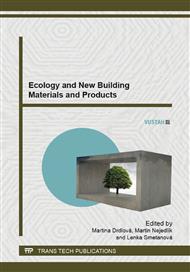p.178
p.182
p.186
p.190
p.199
p.203
p.207
p.211
p.215
Quantification of Micro-Cracks by Acoustic Emission Method during Setting and Hardening of Concrete
Abstract:
As a non-traditional, non-destructive analysis method, the Acoustic Emission Method was used for civil engineering experiment. Concrete is a composite construction material frequently used in civil engineering. We know that concrete is like a man – when concrete is made it is like a baby, then it ages and its properties change in accordance to its baby life. That means it is better to monitor and change its properties when it is young as soon as possible. However, using methods immediately after concrete birth (making the mixture) is difficult. The main aim of the article is to show the application of Acoustic Emission Method during concrete lifetime, particularly during the first days after mixing the mixture. Article describes monitoring concrete structure for 20 days since their making up. Primary interesting part is during first day of hardening. Acoustic Emission Method has used for monitoring both samples. Expected result has been between covered and uncovered specimen.
Info:
Periodical:
Pages:
199-202
Citation:
Online since:
August 2014
Authors:
Keywords:
Price:
Сopyright:
© 2014 Trans Tech Publications Ltd. All Rights Reserved
Share:
Citation:


